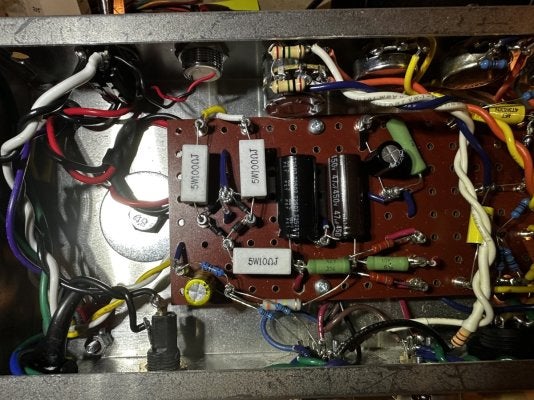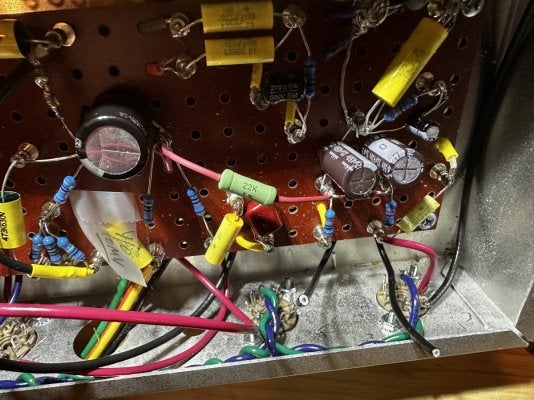I have a Hammond CAX90, but to gain some space in my chassis, I am considering a toroidal alternative, which I would hang vertically from the chassis.
I think a toroid is a great idea since with its reduced magnetic field, it will tend to minimize SE ended hum. Since with a SE amp, there is no “sag” to worry about missing out on with a solid-state rectifier, it means you don’t lose any tonal characteristics with this approach, and also that you can be aggressive with filtering to get rid of hum (not so with a tube rectifier, where filter size is capped based on tube choice). I have a a SE Champwreck with diode rectifier using an 80uF/47uF first and second stage filter and it is dead quiet (I should note that with my original schematic calling for 47/47 uf initial filters, there was still a little hum with my traditional Heyboer PT).
On transformers, what’s your target B+? I’ll do some quick example math, but you should double check me and confirm with smarter people on this forum than me before building yours. For example, I think for a 6V6 anywhere 350 - 400 VAC is good. For your 260-0-260 PT, maybe you get loaded B+ around 350V. I think you’d probably get a bias current of around 35-45 mA with a 470-510 ohm cathode resistor, and that would get you more or less where you want to be (~100% bias).
For reference, I just put an Antek 1T-230 (https://www.antekinc.com/as-1t230-100va-230v-transformer/) into this circuit (https://www.tdpri.com/threads/voxish-new-build.1178147/post-13022487) and ended up with a loaded “undropped” voltage of 320 - 330 VDC (I had some dropping/sag resistors in the circuit that brought it down to around 285 VDC for B+).
Last edited:




